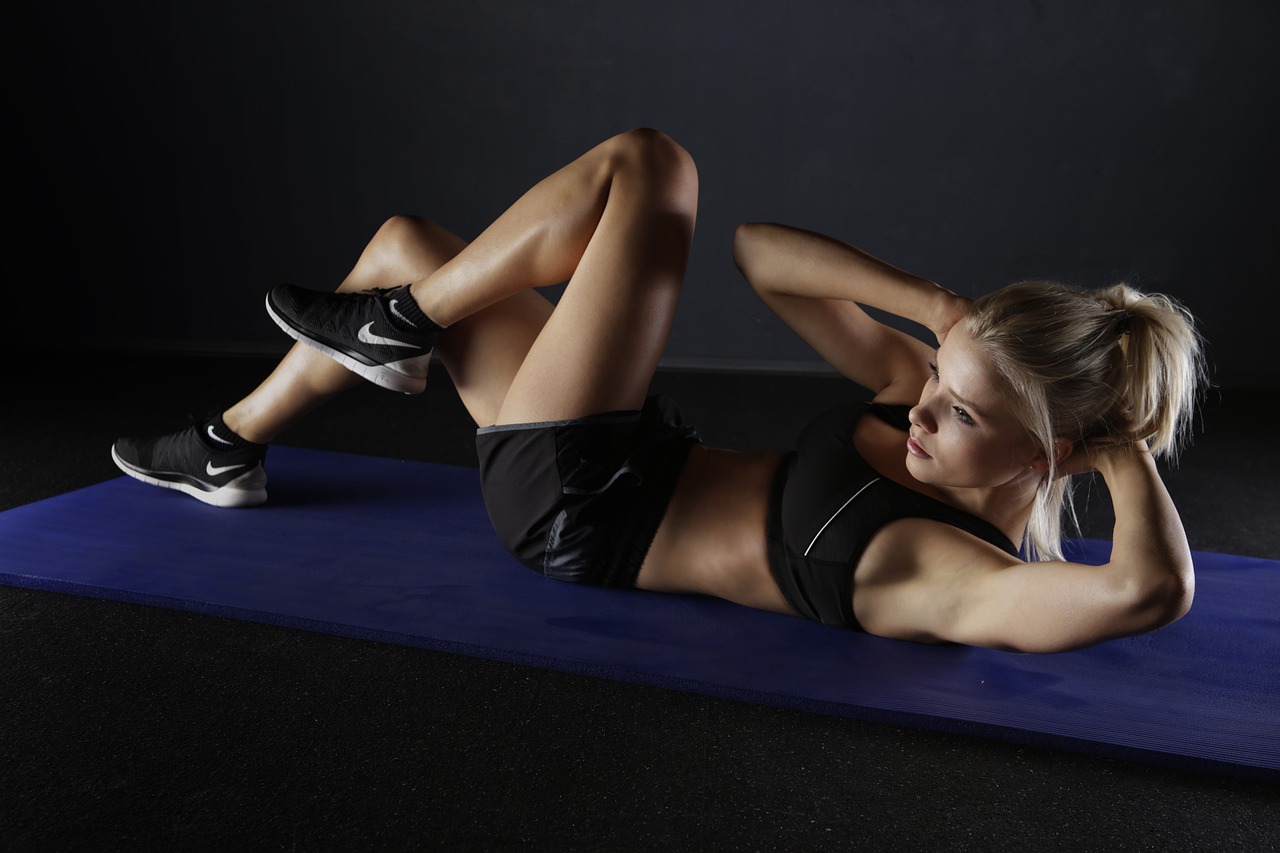
Physical activity is not just about appearance; it plays a crucial role in boosting mood, enhancing energy levels, and improving quality of life. Understanding what each type of exercise offers can help you tailor your fitness routine to suit your needs.
1. Cardiovascular Exercise (Cardio)
What It Is
Cardio exercises include activities that increase your heart rate and breathing rate for an extended period. Common examples include running, cycling, swimming, and dancing.
Benefits
Heart Health:
Cardio is excellent for improving cardiovascular health by strengthening the heart and enhancing blood circulation. Regular cardio exercise helps maintain healthy blood pressure and reduces the risk of heart disease.
Weight Loss:
This type of exercise helps burn calories, supporting weight management. Activities like running or high-intensity interval training (HIIT) can boost metabolism and contribute significantly to fat loss.
Improved Mood:
Cardio releases endorphins, which can alleviate stress and enhance your mood. This natural high, often referred to as the “runner’s high,” can also combat symptoms of anxiety and depression.
Increased Endurance:
Regular cardio workouts improve stamina and endurance, enabling you to perform daily tasks more efficiently and stay active for longer periods.
Lung Capacity:
Engaging in aerobic activities enhances lung capacity and the efficiency of oxygen use in the body, contributing to better overall health and energy levels.
Best For
Those looking to improve their heart health, lose weight, or increase overall energy levels will benefit greatly from incorporating cardio into their routine. It’s also a great option for those seeking an easy way to boost their daily movement.
Tips for Success
Start with moderate activities like brisk walking or cycling and gradually increase the intensity as your fitness level improves.
Aim for at least 150 minutes of moderate cardio or 75 minutes of vigorous cardio per week, as recommended by the World Health Organization (WHO). Mix up different types of cardio to keep your workouts engaging.
Don’t forget to include warm-up and cool-down periods to prevent injury and aid recovery.
2. Strength Training
What It Is
Strength training, also known as resistance training, involves exercises that improve muscle strength and endurance. Examples include weightlifting, bodyweight exercises like push-ups, and resistance band workouts. Activities can be performed using free weights, machines, or your own body weight as resistance.
Benefits
Muscle Building:
Strength training helps increase muscle mass, which supports metabolism and overall strength. More muscle means your body burns more calories at rest, aiding in long-term weight management.
Bone Density:
Resistance exercises promote better bone health and reduce the risk of osteoporosis, making it particularly beneficial for older adults.
Enhanced Metabolic Rate:
Building muscle boosts your metabolic rate, making it easier to maintain or lose weight over time.
Functional Strength:
Strength training can improve functional strength, aiding in everyday activities such as lifting, carrying, or bending.
Injury Prevention:
Strengthening muscles and connective tissues helps protect against injuries, improving stability and resilience.
Posture and Balance:
Regular strength training enhances posture and balance by strengthening core muscles and supporting proper body alignment.
Best For
Individuals who want to build or maintain muscle, improve body composition, or support joint health should incorporate strength training into their weekly routine.
Tips for Success
Begin with bodyweight exercises such as squats, lunges, or planks, and progress to using weights or resistance bands as you become more confident.
Schedule strength training sessions at least 2-3 times per week, ensuring you target all major muscle groups and allow for muscle recovery.
Focus on proper form to maximize effectiveness and reduce the risk of injury. Consider working with a trainer when starting out to learn the correct techniques.

3. Yoga
What It Is
Yoga is a mind-body practice that combines physical postures, breathing exercises, and meditation. There are many styles of yoga, such as Hatha, Vinyasa, Ashtanga, and Yin, each with varying levels of intensity and focus.
Benefits
Flexibility and Balance:
Yoga enhances flexibility, balance, and coordination, reducing the risk of falls and injuries, especially as you age.
Stress Reduction:
The practice of mindfulness and controlled breathing in yoga can decrease stress levels and promote relaxation. It’s a powerful tool for calming the mind and improving mental health.
Joint Health:
Low-impact movements can strengthen joint stability and improve range of motion. It’s particularly beneficial for people with joint pain or arthritis.
Mental Clarity:
Regular practice can improve focus, concentration, and mental well-being. Many people use yoga as a way to disconnect from daily stress and reconnect with themselves.
Core Strength and Posture:
Certain yoga poses target core muscles and help with better posture, contributing to overall body strength and alignment.
Holistic Health:
Yoga encourages an overall sense of well-being, promoting a healthier lifestyle by emphasizing mindfulness and self-care.
Best For
People seeking to reduce stress, improve flexibility, enhance mind-body awareness, or incorporate a gentle yet effective form of physical activity into their routine.
Tips for Success
Start with beginner-friendly classes or online tutorials to learn basic poses and breathing techniques.
Consistency is key—practice yoga 2-4 times a week for the best results. Gradually explore different styles to find what suits you best.
Use props like yoga blocks and straps to help with alignment and make poses more accessible.
4. Pilates
What It Is
Pilates is a form of low-impact exercise that focuses on core strength, flexibility, and overall body awareness. It can be performed on a mat or using specialized equipment such as a reformer.
Benefits
Core Strength:
Pilates emphasizes the deep abdominal muscles, building a strong core that supports the entire body.
Flexibility and Mobility:
Regular practice can enhance flexibility, improve joint mobility, and promote a greater range of motion.
Rehabilitation:
Pilates is known for its rehabilitative effects, making it ideal for those recovering from injuries or looking for gentle exercise options.
Balance and Coordination:
The controlled movements of Pilates help develop better balance and coordination, which can translate to improved performance in other physical activities.
Improved Posture:
By focusing on body alignment and core strength, Pilates encourages better posture, reducing the strain on the spine and improving overall body mechanics.
Mind-Body Connection:
Like yoga, Pilates requires focus and controlled breathing, fostering a strong connection between mind and body.
Best For
Those who want to improve core strength, flexibility, or body alignment, or those recovering from injuries. It’s also excellent for individuals who appreciate a mindful and low-impact approach to fitness.
Tips for Success
Join a class with a certified instructor to learn proper form and technique.
Start with beginner mat classes and progress to more challenging routines or equipment-based Pilates as your strength improves.
Integrate Pilates 1-3 times per week for noticeable improvements in core strength and flexibility.

Choosing the Right Mix
For optimal health and fitness, a balanced approach that combines different types of exercise is often most effective. Here’s how to create a well-rounded routine:
General Health:
Pair cardio with strength training and add yoga or Pilates for flexibility and recovery.
Weight Loss:
Focus on high-intensity cardio for calorie burn and supplement with strength training to build muscle.
Stress Management:
Include yoga or Pilates to relax, improve mindfulness, and release tension.
Muscle Building:
Prioritize strength training but include yoga or Pilates for flexibility and recovery to prevent injury.
Final Thoughts
Choosing the right type of exercise depends on your personal goals, fitness level, and preferences. Mixing different types of workouts can help you build a balanced and sustainable fitness routine that benefits your body and mind.
Subscribe to our newsletter, follow us on social media to let us know how you’re working towards a balanced life!
Oral Health: Causes, Prevention, and the Role of Nutrition
Oral health is often a neglected part of our...
Food Allergies: Causes, Symptoms, and Management
Food allergies and sensitivities are...
Unintentional Weight Loss
Unintentional weight loss can be distressing,...
The Negative Impacts of Plastic Usage on Health and the Environment
Plastic has revolutionized modern life,...
The Impact of Social Media on Body Image: How It Affects Women’s Health
Social media has transformed how we connect,...
Why Women Need Nutrition Counseling Beyond Weight Loss
Women face unique challenges when it comes to...
The Benefits of Journaling for Mental Health
Journaling has gained recognition as a powerful...
Minimalism and Health: The Effects of a Minimalist Lifestyle on Mental and Physical Well-being
Living in a world where consumerism and constant...
Women’s Hormonal Balance: Nutrition, Lifestyle, and Key Strategies for Optimal Health
Introduction Women's hormonal balance is a...










